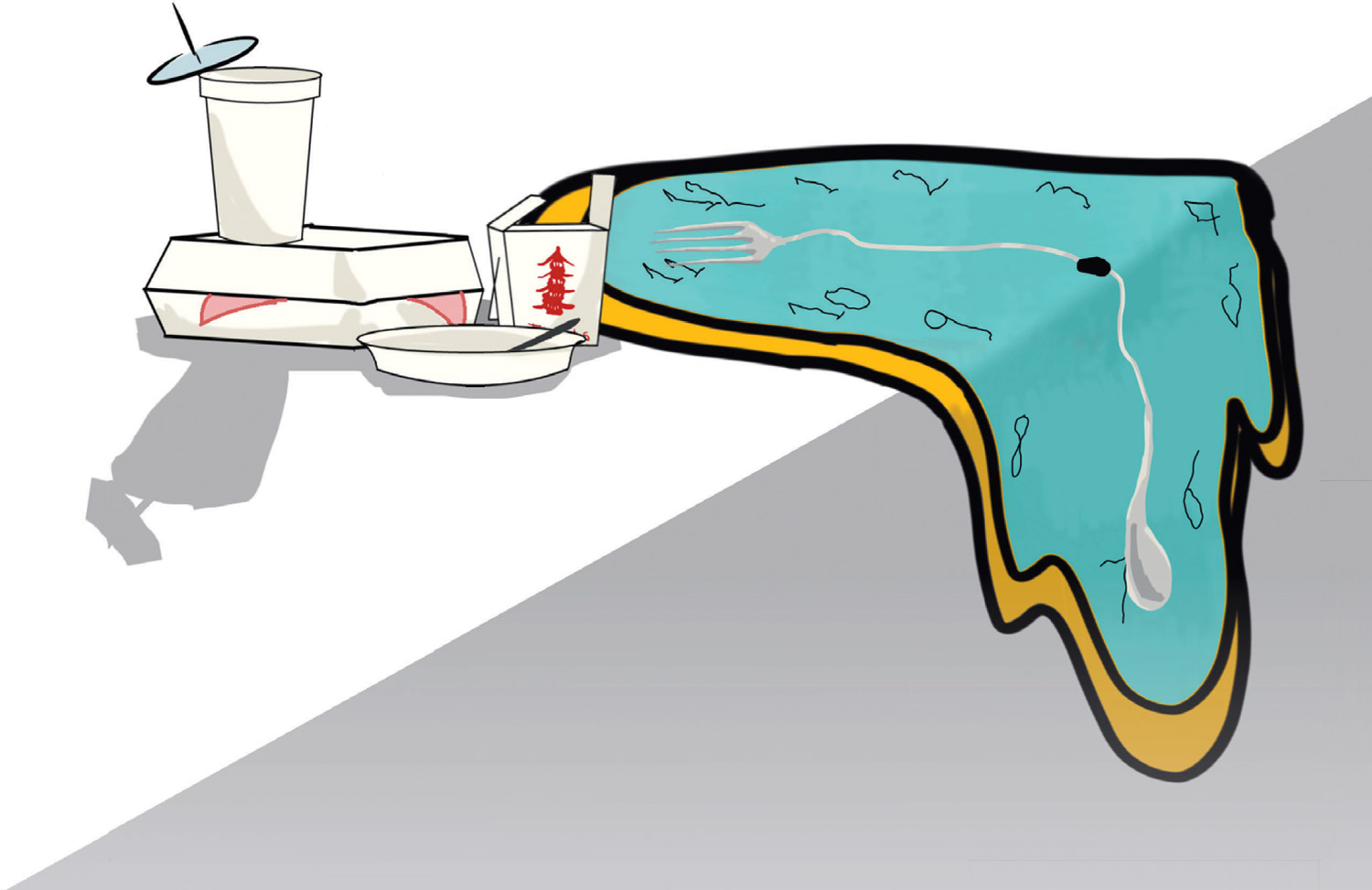And the People Ordered Takeout
A long, long time ago, before the pandemic and the great global sourdough experiment, Americans had something called meals. Breakfast was in the morning and usually consisted of eggs. Lunch was short and sweet—a sandwich on the go. Dinner was the main event—you often got wine.
Then came the global scourge and the country hollered “last call.” So the fortunate ones stopped at the grocery store to pick up lots of toilet paper and then went home. But the longer they stayed home, the stranger things got. Until one day, the people passed the point of being sheltered-in-place and found themselves sheltered-in-time.
Without the normal punctuations to their day, the hours slurred together like one drunken run-on sentence. No one could figure out what to eat or when to eat it. Without time, there could be no mealtime.
They ate at odd hours and sometimes at all hours. They ordered pizza on weeknights, drank before 5 and become shockingly aware that muffins and cupcakes were practically the same thing.
The intellectuals among them advised that they take time to ponder life’s deep philosophical questions. Ask not what’s for lunch, they said, but what is lunch?
“Time is an illusion,” Douglas Adams answered for the people. “Lunchtime doubly so.”
And the people were surprised to find him correct. Mealtimes had not been ordained, they found, but invented. And they had been reinvented over and over in history. Breakfast-lunch-and- dinner was simply the latest hot release—a sticky result of meals maneuvered around working hours like files in a cabinet.
Early European agricultural settlers actually took dinner midday. (For most, it was the only hot meal and was bookended by small cold meals on either side.) Families the country over were relieved to learn that, having been together all day, the settlers hadn’t much felt like talking to their relatives at dinner either.
With the efficiency-obsessed industrial revolution, dinner moved to the evening where it was given grand social expectations as work’s reprieve. Lunch, “a glorified snack,” stepped into its place.
But Americans hadn’t just industrialized their meals, they learned; they had industrialized themselves. One 1830s Frenchman observed that Americans obsessed over self-improvement. They “show themselves constantly tormented by a vague fear of not having chosen the shortest route,” he wrote. Table-to-stomach apparently included.
As the people digested their history and thought about the future, they wondered what it would be like to eat a little slower. And maybe live a little slower too. Would they have to give up chicken in nugget form? Instant noodles? What would it be like to eat in a restaurant rather than have food delivered? How fast was fast food?
There were as many ways to live, they were reminded, as there were ways to eat. They could have a late-night “rere” (late supper) in the Shakespearian fashion; have one meal a day like the ancient Romans thought was best; or mind earth’s eating schedule like early indigenous people.
They wondered what other conventions they adhered to so devoutly that they themselves had made up in the first place. They thought about government, companies and culture. They thought about stop signs, success and chickpea “pasta.” They thought about how they spent their time and how they spent their environment.
When the day came to finally leave their homes and head back out into the world, they vowed to remember that they themselves could change it because they themselves had invented it.
And they had hope.
After all, they had invented brunch.
*Hat tip to author Abigail Carroll of Three Squares: The Invention of the American Meal, whose articles, research, interviews and quotes provided fodder for this essay, and to Catherine O’Meara’s beautiful poem “And the People Stayed Home,” whose format I have fumblingly taken inspiration from.




